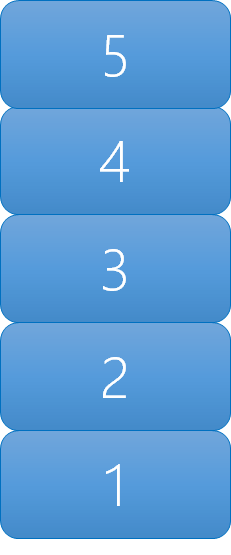This post is one in a series of stuff formally trained programmers know – the rest of the series can be found in the series index.
In this post, we will look at two related and simple data structures, the Stack and the Queue. The stack is a structure which can be implemented with either an Array or Linked List.
An important term for understanding a stack is that it is LIFO, last-in-first-out, system; namely, the last item you add (or push or bury) is the first item you take out when you retrieve an item (or peek or unbury).
Let’s have a look at what a stack would look like:

In this, we added 1, 2, 3, 4, and then 5 and when we read from the stack we read in the reverse order.
#Implementations
Next is the queue, which is very similar to the stack, except where the stack was LIFO; a queue is FIFO, first-in-first-out; so if we put in 1, 2, 3, 4, & 5 into the queue, then we would read them in the same order, i.e. 1, 2, 3, 4, 5.
Implementations
C# has a queue implementation and the JavaScript array can act as a queue, when you use unshift to add to the beginning of the array (also known as the head) and pop to remove from the end of the array (also known as the tail).
